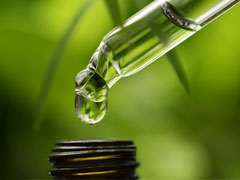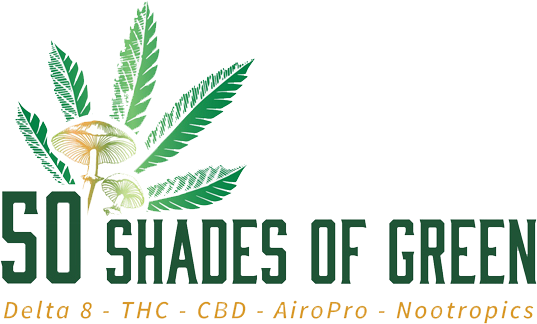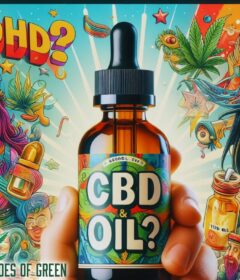How Is CBD Oil Made?

How Is CBD Oil Made?
Author: Pure CBD
Whether it is in oils, soft gels, or added to topical products, CBD oil has quite a long list of benefits, which has made it one of the most used health products of the last four years. To get those benefits in a usable, concentrated form, the CBD oil itself must first be separated from harvested hemp. If you have been an avid CBD oil patron for a while, you may have asked yourself “How exactly is CBD oil made?”
Most CBD users know that their CBD — which stands for cannabidiol — is a product of hemp, the legal form of cannabis. CBD oil is the final-form product of hemp extraction to get the concentrated oil that provides the health benefits that CBD usage is known for, leaving behind the unwanted plant parts. In a nutshell, CBD oil extraction involves harvesting the desire constituents of the hemp plant (CBD, plus certain other minor cannabinoids and terpenes) while removing the undesirable byproducts (waxes, fats, lipids and chlorophyll).
How Is CBD Oil Made From Hemp?
In a way, CBD oil is not something you “make” as much as it is something you extract and clean up from its raw natural form. Almost all CBD oil is extracted from hemp that has been harvested, dried, and ground up. Once the hemp plants are first harvested, they are dried to remove moisture and prevent mold. This is done by either by hanging the plants or putting them in an industrial dryer to get their moisture content down around 12%. Next, the dried hemp plants are either chopped or ground up. This breaks down the tough plant fiber and makes the CBD more accessible for extraction. Once the hemp has undergone these initial steps, there are several main methods, each with their own pros and cons, to get the CBD oil out of the dried hemp biomass.
CO2 Extraction

CO2, or Carbon dioxide extraction, is an expensive, lower-volume method that extracts CBD and other desirable hemp components without the use of harmful solvents that can leave residues or be harmful to your health. CO2 acts as a “separator” that isolates CBD oil from other components present in the hemp biomass. Because CO2 has properties of both a gas and a liquid, it flows easily through the hemp biomass and pulls more of the beneficial compounds out than most other extraction methods. The other advantage of this is it uses no harmful solvents, simply highly compressed carbon dioxide that evaporates harmlessly after the extraction is complete. The CO2 is chilled to extremely low temperatures and pushed through the dried hemp biomass in a sealed container at high pressure. The cannabinoids and terpenes stick to the CO2, and travel to a sealed container where they collect in liquid form. When the container is opened and the pressure removed, the remaining CO2 evaporates, and the extracted oil is left at the bottom of the vessel.
Ethanol Extraction
Another way to separate CBD oil from the hemp flower is using alcohol as the solvent. One of the most common solvents for CBD extraction is ethanol, which is simply high-proof alcohol. Alcohol is mixed in with the dried hemp biomass and pulls the CBD out into the liquid. Alcohol can be used to extract almost any botanical, but it leaves a lot of the desired component behind, while tending to indiscriminately pull other components out at the same time that may not be wanted. Alcohol CBD extraction works by “soaking up” the CBD from the dried hemp material into the liquid, allowing it to be poured off. The alcohol can then be heated up and boiled off, since alcohol has a much lower boiling point than CBD, so it evaporates at lower temperatures. Once the alcohol is boiled off, the CBD oil remains behind. Alcohol extraction requires almost no specialized equipment, simply high-proof alcohol (usually 95% or higher grain alcohol) and some mixing containers. Proper ethanol extraction entails an additional step to remove the alcohol so that little or no alcohol remains behind in the finished CBD oil. Some sellers of CBD oil simply leave the alcohol behind as part of an oral tincture.
Hydrocarbon Extraction

Hydrocarbon extraction is very similar to ethanol extraction, only instead of using ethanol, it uses hydrocarbons like propane, butane, or hexane as the solvent. These options are preferred for higher volume extraction over alcohol because they are all in gas form and can pull CBD from hemp more efficiently than liquid ethanol can. The chemical bond very well to cannabinoids like CBD, allowing them to separate it very quickly and efficiently from the plant material when under pressure. The downside to hydrocarbon extraction is, just like using a propane grill, they can leave behind unpleasant taste and chemicals. They require specialized equipment to remove the hydrocarbons from the oil after the extraction process is complete. Because they are flammable gases, they require additional safety measures, and can be harsher on the delicate cannabinoids and terpenes. They are the primary method used in large-scale CBD extraction because of the cost savings and extraction efficiencies.
Oil Extraction
A favorite amongst DIY CBD extractors, oil extraction uses heat and an off the shelf vegetable oil. This extraction is performed by basically cooking the hemp flower in hot oil. The flower is cooked in oil — usually a thick carrier oil. The most common type of carrier oil used seems to be olive oil or MCT (coconut) oil, but even olive oil will work.
The olive or MCT oil absorbs the CBD oil, creating a combination of the carrier and the CBD. This is highly inefficient, as it leaves a lot of the CBD behind, and pulls a lot of unwanted plant waxes and oils along with the CBD oil. It is only used for small batch extractions by hobbyists, and is not efficient enough for commercial extraction, but can be used at home with a stovetop and cooking pan to provide a small amount of partially-purified CBD oil from hemp. The carrier oil will still be mixed in with the CBD oil and is not removed before consumption.
Purifying the CBD Oil
After extraction, CBD oil will often contain several impurities like the fats from the hemp plant. For retail use, these impurities need to be removed, as they dilute the CBD content and give it an unpleasant “green” taste, much like grass clippings or leaves. There are two steps to remove impurities, winterization and filtration. Both are critical to concentrate the CBD potency, as well as removing the non-beneficial parts of the plant extract.
Winterization and Filtration

The most common types of impurities present in freshly extracted CBD oil are plant fats and resins. The fats, in particular, tend to solidify at room temperature or slightly lower. When the raw oil is chilled, these fats rise to the top, like putting a soup or stew in the refrigerator. These unwanted plant byproducts are typically greenish or white in color and include plant lipids and chlorophyll in the case of hemp. Winterization is a process where the CBD extract is subjected to freezing temperatures to make these unwanted components separate out from the valuable cannabinoid oil and terpenes.
After ethanol extraction, the fats and resins rise to the top of the heterogeneous mixture. The mixture is then cooled further to allow the fats and resins to consolidate at the top before filtration. They can then be scraped off to remove the heaviest amounts, leaving the purer CBD oil underneath. The oil is then typically sent through a filter, similar to a giant coffee filter, that further strains out the unwanted components and allows the alcohol-and-CBD mixture to settle to the bottom where it can then be further processed to remove the alcohol, leaving only liquid CBD oil behind. Some companies submit their own to multiple passes through filters to more fully remove the plant waxes and lipids. The final mix is then put in a specialized pied of equipment called a rotary evaporator (rotovap) that pressurizes the liquid to lower the boiling point and evaporates off the remainder of the alcohol for final processing.




